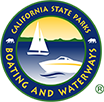
The U.S. Army Corps of Engineers, the State of California, and various local agencies in California have collaborated to create tools for the purpose of regional sediment management (RSM). One of the benefits of RSM is to provide a cost effective way of nourishing beaches and providing necessary shoreline protection to California's coast. A GIS-based tool called the Coastal Sediment Benefit Analysis Tool (CSBAT) evaluates the economic costs and environmental considerations associated with beneficial reuse of beach-quality sediment obtained from various sources, including coastal (e.g., harbors), inland (e.g., dams/debris basins) and offshore locations, and placed on various beaches within the region that are in need of sediment. CSBAT incorporates six components: Sediment Sources; Receiver Sites; Transportation Modes and Cost; Recreational Usage and Benefit; Cost Benefit Analyses, and Environmental Considerations.
The CSBAT beta model is designed to function as a planning level screening tool to help decision-makers develop alternative sediment disposal scenarios within an efficient, user-friendly environment. The current CSBAT was developed with regional scale data and simplified analyses. It is intended as a screening level tool (not to be used for site specific project design) and still has many limitations on its application.
The CSBAT application allows the end user to develop a wide array of scenarios that estimate the relative costs and benefits associated with placing various volumes of sediment, through various transportation methods, at various receiver sites from a particular source. This approach allows the end user to accomplish at least two tasks in an efficient and effective manner: 1) determining the least cost method of transporting the sand; and 2) determining the volume of sand that provides the greatest increase in recreational value.
MODEL DEVELOPMENT
CSBAT was developed using a combination of Visual Basic programming and ArcGIS customization, utilizing spatial and non-spatial data stored within a geodatabase environment. The CSBAT was designed around six components: Sediment Sources; Receiver Sites; Transportation Modes and Cost; Recreational Usage and Benefit; Cost Benefit Analyses, and Environmental Considerations. Each component was developed with regional data and finite options. However, the model has been designed to accommodate future expansion of data sources and model capabilities.
Sediment Sources - The CSBAT was designed to have the option of sediment sources from offshore, harbors and inland (such as dams and debris basins) with user-specified sediment volumes at each sediment source. For each sediment source, a geo-spatial location is identified and tied into the transportation network for cost calculations. Sediment volumes are also tied into the beach nourishment calculations.
Receiver Sites - Available beach characteristics of the receiver sites are stored within the geodatabase and used with the beach nourishment calculations. The beach nourishment calculations to determine the increase in beach width over time are based on site-specific characteristics. The CSBAT application has also been designed to accommodate an extendable list of potential beach receiver sites.
Transportation Modes and Cost - CSBAT calculates costs associated with various transportation modes once a Source and Receiver site has been selected. This was accomplished by developing a multi-nodal transportation network that has the Source and Receiver sites built into it as transportation stops (nodes) along a network of roads, rail lines, coastlines, and ocean tow routes. The transportation networks were built using ArcGIS 9.1 Network Analyst. All GIS data originally came from sources such as the Army Corps of Engineers and the State of California. Transportation costs are calculated based on the distance traveled along the network from the source to the receiver sites including all the mobilization and demobilization of equipment.
Recreational Usage and Benefit - The CSBAT application calculates the existing and estimated increase in recreational value at the receiver site after beach nourishment assuming some increment in beach width. Elements used to calculate the recreational benefit increase include: Weather, Water Quality, Beach Width and Quality, Overcrowding, Facilities/Services, and Availability of Substitutes. Additional information on Annual Attendance and Overnight/Day Use spending are used to convert the day use values into Annual Recreational Value, Local and State Spending, and Local and State Tax Generation.
Cost and Benefit Analyses - The CSBAT application calculates the Benefit/Cost (B/C) Ratio based on the selected source and receiver site, the calculated recreational benefits, quantity of sediment used for beach nourishment, and the transportation mode.
Environmental Considerations - The CSBAT application has been designed to report on environmental considerations associated with transporting sediments from the source to the receiver site, and those associated with beach nourishment activities at each receiver site. The data tables for the Receiver beaches were developed by a review of historical records.
